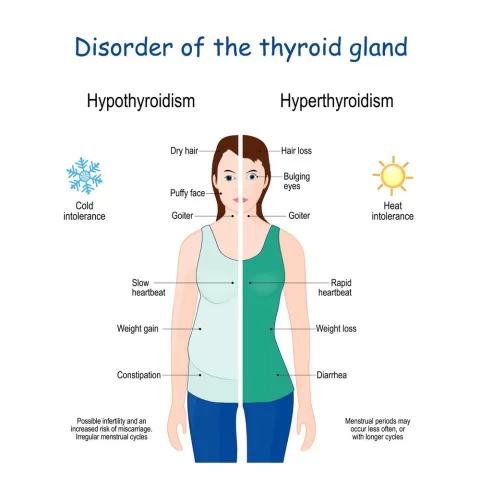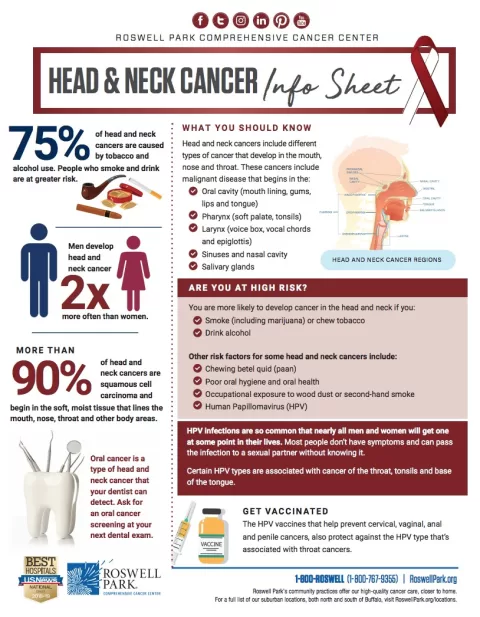Air pollution and influenza represent an urgent public health concern globally, with a growing body of research indicating that deteriorating air quality can significantly elevate the risk of influenza-like illnesses (ILIs). In regions like Hangzhou, China, recent studies have illustrated the detrimental impact of pollutants such as PM2.5, NO2, and SO2 on respiratory health. The relationship between air quality and health outcomes is increasingly crucial for understanding and mitigating the risks associated with respiratory disease outbreaks, particularly during colder months. Elevated levels of fine particulate matter (PM2.5) have been directly linked to heightened instances of ILIs, underscoring the need for environmental epidemiology initiatives aimed at tracking these associations. As we delve into this topic, it is imperative to explore findings such as those from the Hangzhou air pollution study, which revealed a 1.018 relative risk increase per 10 µg/m3 of PM2.5, emphasizing the urgent need for improved air quality management strategies.
Investigating the interplay between air contaminants and respiratory infections, particularly influenza-like diseases, highlights a critical aspect of public health. Terms like airborne particulate matter and respiratory virus incidence come to the forefront as we explore this intricate relationship. Studies have shown that pollutants like PM10 and nitrogen oxides not only compromise lung function but also increase susceptibility to viral illnesses. Understanding the seasonal variations in these effects is vital for developing effective health interventions. As research continues to unfold, it is essential to acknowledge how the presence of harmful air particles correlates with elevated risks of respiratory conditions, prompting us to take action towards enhancing air quality and protecting community health.
Understanding the Link Between Air Pollution and Health
Air quality is a critical factor that directly impacts public health, especially regarding respiratory diseases. In urban settings like Hangzhou, China, elevated levels of pollutants such as PM2.5 and NO2 have been linked to a range of health issues, from asthma to more severe results like cardiovascular diseases. The connection between air quality and health has attracted attention, as studies emphasize how poor air conditions can lead to increased incidences of respiratory illnesses. This knowledge is essential for public health initiatives aimed at reducing exposure and enhancing overall health outcomes.
Environmental epidemiology provides several insights into how pollution levels affect human health. Research indicates that each increment in particulate matter can significantly elevate health risks. In terms of influenza-like illness (ILI), exposure to pollutants such as PM2.5 and PM10 correlates with higher rates of respiratory infections. This highlights the importance of ongoing monitoring and research in air quality management to protect vulnerable populations, particularly in high pollution areas.
Influenza-like Illness Risk in Relation to Air Quality
The risk of influenza-like illness (ILI) is heavily influenced by environmental factors, particularly air quality. The recent study conducted in Hangzhou demonstrates a concerning relationship between elevated air pollutants and the rates of ILI. The presence of pollutants like SO2 and ozone exacerbates respiratory dysfunction, leaving individuals more susceptible to viral infections such as influenza. The results from this research underline the critical need for strategies to mitigate air pollution, especially during the peak seasons of respiratory diseases.
Using robust statistical models, the Hangzhou study illustrates that for every increase in PM2.5 levels, the relative risk of developing ILI rises, particularly during colder months. This seasonal variation reinforces the significance of addressing air quality standards and implementing effective public health policies aimed at decreasing pollutant levels. Moreover, understanding these risks associated with air quality can help in developing targeted interventions to protect populations during high pollution periods.
The Impact of PM2.5 on Respiratory Health
Particulate matter, specifically PM2.5, is a prevalent air pollutant that poses significant risks to respiratory health. Studies have shown that fine particulate matter can penetrate deep into the lungs, leading to inflammation and a higher likelihood of respiratory complications. In regions like Hangzhou, where air pollution is a recurring issue, individuals are particularly vulnerable to the adverse effects of PM2.5 exposure. The medical community stresses the importance of assessing PM2.5 levels given its strong correlation with health conditions, including ILI.
In the context of the Hangzhou air pollution study, researchers found that increased PM2.5 levels not only correlate to heightened ILI rates but also stress the essential role of effective air quality management in urban planning. Measures to control PM2.5 emissions can significantly lower health risks, thereby contributing to better public health outcomes. This also highlights the need for continued research to elucidate the mechanisms through which PM2.5 contributes to increased respiratory disease risk.
Seasonal Variations in Air Pollution and Illness Rates
The interplay between seasonal variations and air pollution presents a complex landscape for public health in urban areas. In Hangzhou, specific pollutants exhibited significant associations with influenza-like illnesses primarily during colder months. Such seasonal shifts in air quality can directly impact public health strategies, emphasizing the need to focus on pollutant reduction during high-risk periods. This seasonal analysis is crucial for developing targeted interventions aimed at minimizing the public’s health risks related to air pollution.
Understanding how environmental factors fluctuate with the seasons helps in predicting possible surges in health issues associated with air quality. For instance, increased heating during winter can lead to higher pollution levels, amplifying the risk of respiratory illnesses such as pneumonia and ILI. The findings from the Hangzhou study warrant a more proactive approach to air quality management, with particular emphasis on seasonal trends and their potential health implications.
Regulatory Frameworks for Air Quality Management
The establishment of comprehensive regulatory frameworks is essential in managing air quality effectively. In light of studies linking air pollution to health risks, including ILI, governments are encouraged to adopt stricter air quality standards. The Hangzhou air pollution study serves as a critical piece of evidence advocating for policy changes that prioritize public health. By implementing regulations that control emissions from industrial sources and vehicles, cities can significantly improve air quality.
Moreover, these regulatory measures should include public awareness campaigns to educate residents about the health impacts of air pollution. Encouraging community involvement in air quality monitoring can also enhance compliance and foster a culture of environmental responsibility. Hence, efforts toward better air quality management are not only a public health necessity but also a societal obligation to safeguard the health of future generations.
The Role of Meteorological Factors in Air Quality
Meteorological factors play a pivotal role in influencing local air quality, directly affecting the concentration of harmful pollutants. In Hangzhou, seasonal weather patterns, such as temperature and humidity, significantly determine the levels of pollutants like PM2.5 and NO2. This interaction emphasizes the interconnectedness of environmental factors and health outcomes, particularly concerning respiratory illnesses. Understanding these relationships is crucial for developing effective public policies aimed at improving air quality.
Additionally, the study findings indicate that variations in meteorological conditions can exacerbate the effects of pollution on health. For instance, temperature inversions can trap pollutants close to the ground, leading to increased exposure during colder months. This highlights the need for meteorological data to be incorporated into health assessments and air quality regulations, ensuring that public health strategies consider not just pollution levels but also the environmental conditions that contribute to air quality fluctuations.
Future Directions in Air Quality Research
The ongoing advancements in environmental epidemiology and air pollution research are vital for understanding and mitigating health risks associated with poor air quality. Future studies should expand on the reported associations by examining the long-term impacts of air pollutants on health, especially vulnerable populations. Research must also focus on the cumulative effects of various pollutants, as individuals are often exposed to a complex mix of air contaminants that can interact in unpredictable ways.
Furthermore, interdisciplinary approaches combining environmental science, health studies, and policy analysis are essential for more effective interventions. Collaborative efforts between researchers, health organizations, and governments can lead to innovative solutions that prioritize public health while addressing the challenges posed by air pollution. Such comprehensive research will empower policymakers to make informed decisions that can protect communities from the detrimental effects of poor air quality.
Public Awareness and Education on Air Quality Issues
Increasing public awareness about the implications of air pollution on health, particularly concerning respiratory diseases like influenza, is crucial. Education campaigns targeting the population can significantly enhance community understanding and engagement regarding air quality issues. The results of the Hangzhou study can serve as a powerful tool to inform residents about the direct risks associated with air pollution and the importance of clean air initiatives.
Moreover, schools and local organizations can play a significant role in disseminating information and promoting practices that contribute to better air quality. By fostering an informed community, public health authorities can advocate for behavioral changes, such as minimizing outdoor activities during high pollution days, thus reducing exposure to harmful air pollutants. Ultimately, effective education strategies can empower citizens to be proactive in safeguarding their health and advocating for cleaner air.
Implications for Public Health Policy and Practice
The findings from the Hangzhou study provide crucial insights for public health policy, urging the need for interventions that focus on air quality management. Policymakers must prioritize regulations that minimize air pollution as a means of combating respiratory illnesses like influenza. Effective public health strategies should include surveillance of air quality alongside monitoring illness rates to develop timely responses related to pollution spikes and health impacts.
Additionally, healthcare practices must evolve to incorporate environmental health considerations in patient care. This includes educating healthcare providers about the links between air quality and respiratory illnesses, enabling them to offer informed advice to patients. With the growing body of evidence linking air pollution to health issues, integrating environmental assessments in routine health care can lead to better outcomes for vulnerable populations suffering from air quality-related diseases.
Frequently Asked Questions
How does air pollution impact influenza-like illness risk in Hangzhou?
Air pollution, particularly from PM2.5, PM10, NO2, and SO2, significantly increases the risk of influenza-like illness (ILI) in Hangzhou. A study using a generalized linear model revealed that for every 10 µg/m3 increase in PM2.5, there is a 1.8% increase in ILI cases, especially during the colder months when pollution levels tend to peak.
What pollutants are linked to influenza-like illness based on environmental epidemiology studies?
Environmental epidemiology studies have identified pollutants such as PM2.5, PM10, NO2, and SO2 as key contributors to influenza-like illness (ILI). These studies have demonstrated a clear correlation between elevated levels of these pollutants and increased ILI cases, underscoring the need for improved air quality.
What are the seasonal effects of air pollution on influenza risk?
Research indicates that air pollution’s impact on influenza-like illness (ILI) risk is more pronounced in the colder season. Elevated levels of PM2.5 and NO2 during this time are statistically linked to higher ILI occurrences in Hangzhou, as colder weather exacerbates the effects of air pollutants on respiratory health.
Why is air quality management important for public health in relation to influenza?
Air quality management is crucial for public health as it directly influences the incidence of influenza-like illnesses (ILI). Poor air quality, characterized by high levels of PM2.5 and NO2, can increase ILI risks, highlighting the need for effective policies to mitigate air pollution and protect community health.
How can individuals reduce their risk of illness related to air pollution and influenza?
Individuals can reduce their risk of influenza-like illnesses related to air pollution by staying indoors during high pollution days, using air purifiers, wearing masks, and following public health guidelines for vaccinations. These measures can help shield vulnerable populations from the adverse health impacts of air quality deterioration.
What were the key findings of the Hangzhou air pollution study on influenza-like illness?
The key findings of the Hangzhou air pollution study revealed a significant association between air pollutants, specifically PM2.5, PM10, NO2, and SO2, and increased cases of influenza-like illness (ILI). The study emphasized the elevated ILI risk during colder months, illustrating the complex interplay between air quality and respiratory health.
What health implications arise from the link between air pollution and influenza-like illness?
The health implications of the connection between air pollution and influenza-like illness (ILI) are concerning. Increased ILI cases can strain healthcare resources and lead to higher morbidity and mortality rates. Therefore, addressing air pollution is essential for improving overall public health and reducing flu-related illnesses.
| Key Point | Details |
|---|---|
| Study Focus | Assessing the impact of air pollution on influenza-like illness (ILI) in Hangzhou, China. |
| Research Period | 2015 to 2021, analyzing correlation between air quality and ILI cases. |
| Key Pollutants | Nitrogen dioxide (NO2), sulfur dioxide (SO2), particulate matter (PM2.5 and PM10), and ozone (O3). |
| Methodology | Generalized linear model (GLM) with quasi-Poisson regression used to analyze data. |
| Significant Findings | PM2.5, PM10, and NO2 increase ILI risk, particularly during colder months. |
| Public Health Implications | Highlights the importance of air quality management to reduce health risks. |
Summary
Air Pollution and Influenza are closely linked, and this study provides crucial insights into how pollutants influence respiratory health. The research highlights the increased risk of influenza-like illnesses associated with air pollution in Hangzhou, particularly from pollutants like PM2.5 and NO2 during colder seasons. Effective air quality management strategies are essential to mitigate these health risks and improve public health outcomes.
The content provided on this blog (e.g., symptom descriptions, health tips, or general advice) is for informational purposes only and is not a substitute for professional medical advice, diagnosis, or treatment. Always seek the guidance of your physician or other qualified healthcare provider with any questions you may have regarding a medical condition. Never disregard professional medical advice or delay seeking it because of something you have read on this website. If you believe you may have a medical emergency, call your doctor or emergency services immediately. Reliance on any information provided by this blog is solely at your own risk.








